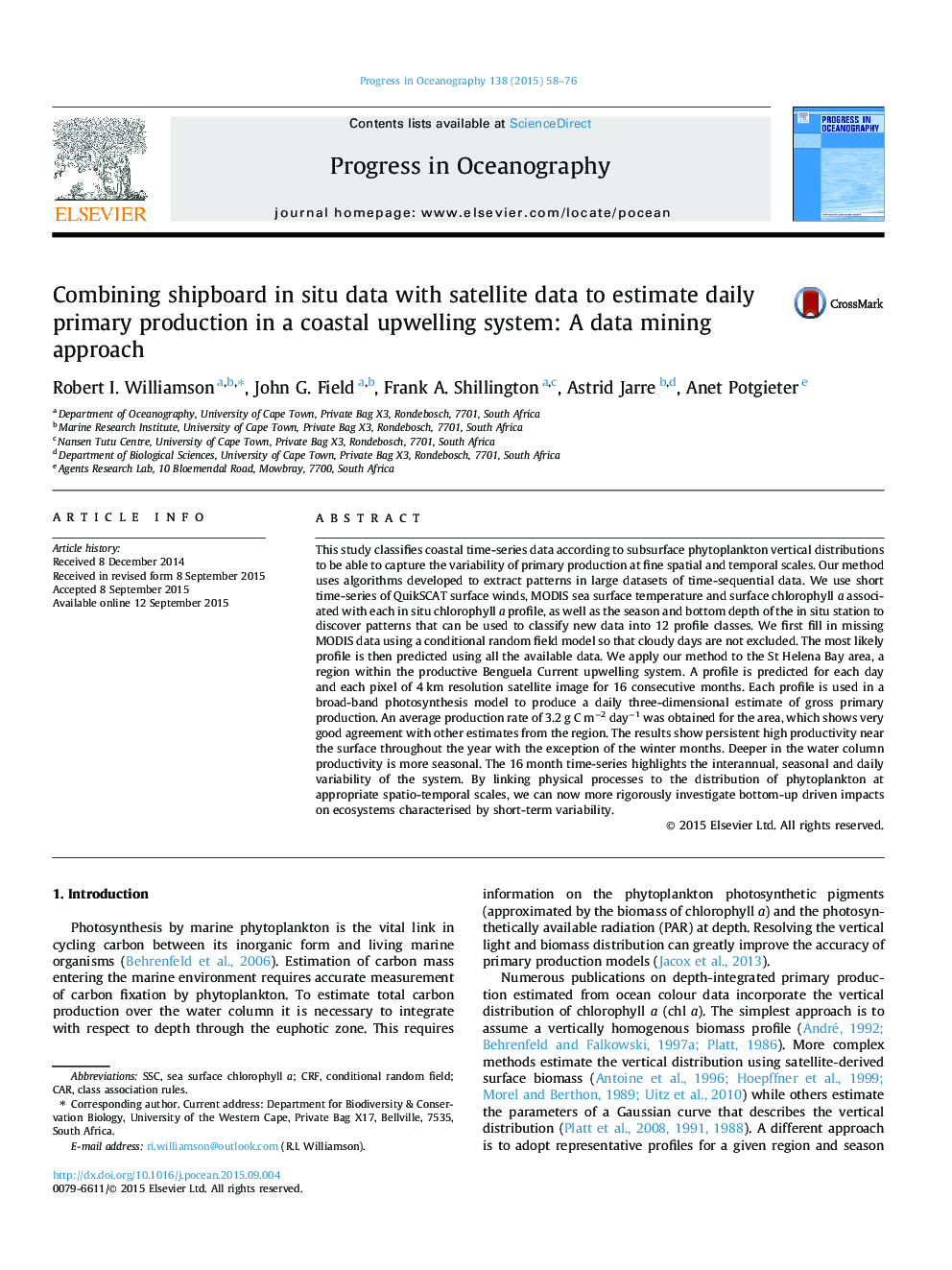| Article ID | Journal | Published Year | Pages | File Type |
|---|---|---|---|---|
| 6388461 | Progress in Oceanography | 2015 | 19 Pages |
â¢A three-dimensional model of daily primary production is presented.â¢The model is applied to a highly dynamic upwelling system.â¢The results highlight the fine scale variability.â¢The interannual variability of individual upwelling events is demonstrated by the model.
This study classifies coastal time-series data according to subsurface phytoplankton vertical distributions to be able to capture the variability of primary production at fine spatial and temporal scales. Our method uses algorithms developed to extract patterns in large datasets of time-sequential data. We use short time-series of QuikSCAT surface winds, MODIS sea surface temperature and surface chlorophyll a associated with each in situ chlorophyll a profile, as well as the season and bottom depth of the in situ station to discover patterns that can be used to classify new data into 12 profile classes. We first fill in missing MODIS data using a conditional random field model so that cloudy days are not excluded. The most likely profile is then predicted using all the available data. We apply our method to the St Helena Bay area, a region within the productive Benguela Current upwelling system. A profile is predicted for each day and each pixel of 4 km resolution satellite image for 16 consecutive months. Each profile is used in a broad-band photosynthesis model to produce a daily three-dimensional estimate of gross primary production. An average production rate of 3.2 g C mâ2 dayâ1 was obtained for the area, which shows very good agreement with other estimates from the region. The results show persistent high productivity near the surface throughout the year with the exception of the winter months. Deeper in the water column productivity is more seasonal. The 16 month time-series highlights the interannual, seasonal and daily variability of the system. By linking physical processes to the distribution of phytoplankton at appropriate spatio-temporal scales, we can now more rigorously investigate bottom-up driven impacts on ecosystems characterised by short-term variability.
Graphical abstractDownload high-res image (158KB)Download full-size image
